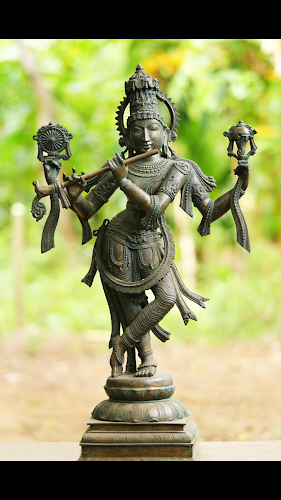हेलो...!!! दोस्तों...!!! फिर से आपका स्वागत है हमारे आज के बहुत ही इंटरेस्टिंग म्यूजिक रिलेटेड जानकारी में। इससे पहले वाले पोस्ट में मैंने आपको राग के बारे में पूरी जानकारी दी थी। अगर आपने वह पोस्ट नहीं देखा है तो उसका लिंक मैं यहां पर शेयर कर रहा हूं पहले उसको आप ध्यान से पढ़िए उसके बाद आपको यह वाली पोस्ट और भी अच्छे से समझ में आएगी। तो चलिए शुरू करते हैं।
राग की रचना में बहुत सारे ऐसी चीजें हैं जो राग बनाने के लिए बहुत जरूरी है। राग बनता है थाट में से और थाट के कई नियम होते हैं। वैसे ही राग बनाने के लिए बहुत सारे नियमों का पालन करना पड़ता है। पहले तो हमें किन स्वरों का उपयोग करना है, किस थाट में हमें वह राग बनाना है, उस में उपयोग होने वाले स्वरों का चलन कैसा है। यह सब बातें और यह सब नियम का पालन राग बनाते समय करना बहुत ही जरूरी है।
राग की रचना में कौनसी-कौनसी ऐसी चीजें हैं जिन्हें ध्यान में रखना है उसके बारे में मैं आज पूरी जानकारी दूंगा।
राग रचना में उपयोगी कुछ सिद्धांत:-
- आरोह और अवरोह का चलन:- राग रचना में आरोह अवरोह बहुत ही महत्वपूर्ण है। राग के आरोह अवरोह के चलन के अनुसार ही राग की रचना की जाती है। जिस प्रकार हम देखें कि यमन राग ने आरोह :- नी़ रे गा म प ध नी सां है और अवरोह:- सां नी ध प म ग रे सा है। यमन राग में जो यह नी रे गा का नियम है उसे पूरे राग में उस नियम का पालन किया गया है। इस प्रकार आरोह अवरोह का चलन बहुत महत्वपूर्ण है।
- वादी स्वर:- जिस स्वर का राग में सबसे ज्यादा उपयोग होता है उस स्वर को वादी स्वर कहा जाता है।
- संवादी स्वर:-जिस स्वर का उपयोग राग में वादी स्वर के बाद सबसे ज्यादा होता है उसे संवादी स्वर कहते हैं।
- वर्जित स्वर:- जिन स्वरों का उपयोग राग में नहीं होता उन स्वरों को वर्जित स्वर्ग कहा जाता है। यह तीनों स्वर राग की रचना में महत्त्वपूर्ण योगदान देेेते हैं।
- जाति:- राग में कितनी संख्या में स्वर उपयोग किए गए हैं उसके हिसाब से उसकी जाति तय होती है। जाति राग का ऐसा नियम है जिससे राग का जाति विभाजन किया जाता है। कुल 3 जातियां हैं। (१) ऑडव (२) शाडव और (३) संपूर्ण। ऑडव जाति के रागों में स्वरों की संख्या 5 होती है। शाडव जाति के रागों में स्वरों की संख्या 6 होती है और संपूर्ण जाति के रागों में स्वरों की संख्या 7 होती है। इस प्रकार रागों का जाति विभाजन किया जाता है।
- थाट:- जिसमें से राग उत्पन्न होता है उसे ठाट या थाट कहते हैं। भारतीय शास्त्रीय संगीत में 10 थाटों उपयोगी हैं। जिनमें से राग की रचना की जाती है
- रस:- राग का अपना ही एक भाव एक रस होता है। जिससे राग की प्रकृति पता चलती है। जिस प्रकार गानों के अलग-अलग प्रकार के भाग होते हैं वैसे ही राग में भी उसकी रचना अनुसार उसमें भाव प्रकट होता है।
- समय:- हर एक राग उसका निर्धारित समय पर अगर गाया जाए तो उसका भाव अच्छी तरह से प्रकट होता है। राग के वादी स्वर के आधार पर उसे गाने का समय निश्चित किया जाता है।
- पकड़:- वह स्वर समूह जिससे राग की पहचान की जा सके उस स्वर समूह को पकड़ कहते हैं।
तो यह थी आज की जानकारी राग की रचना के बारे में। मुझे विश्वास है कि आपको यह पसंद आया होगा। अगली बार फिर मिलेंगे कुछ ऐसे ही इंटरेस्टिंग म्यूजिकल इंफॉर्मेशन के साथ। शुक्रिया।
................................................................................................
English translation
Hello...!!! Friends ... !!! Welcome back to our very interesting music related information today. In the earlier post, I gave you complete information about the raga. If you have not seen that post, then I am sharing its link here, first read it carefully after that you will understand this post even better. So let's start.
There are many such things in the composition of a raga which is very important for making a raga. The raga composed by thaat and thaat has many rules. Similarly, to make a raga, many rules have to be followed. First of all, which notes do we have to use, in which thaat we have to make that raga, what is the progression of notes used in it. It is very important to follow all these things and all these rules while making a raga.
Today, I will give full information about what are the things that have to be kept in mind in the raga.
Some principles useful in raga composition: -
- The progression of ascension and descent: - progression of ascension descent is very important in raga composition. The raga is composed according to the progression of the order of ascension and descent. Just as we can see that the Yemen raga has ascended: - Ni re ga is pa dha ni Saa and descent: - Saa ni dha pa ma ga re Sa. This is the rule of Ni Re Ga which is followed in the Yemen raga, that rule has been followed throughout the raga. Thus the trend of ascension and descent is very important.
- Vadi Swara: - The note which is used most often in the raga is called Vadi Swara.
- Samvadi Swara: - The note which is used most in raga after the Vadi Swara is called the Samvaadi swar.
- Varjit Swara:- The notes which are not used in the raga, those notes are called varjit swara. These three notes contribute significantly to the composition of the raga.
- Caste: - According to the number of notes used in the raga, its caste is determined. Caste is such a rule of raga by which caste is divided by raga. There are 3 castes in total. (1) Audava (2) Shadava and (3) Sampoorna. The number of notes is 5 in the ragas of the Audava caste. The number of notes is 6 in the ragas of Shadava caste and 7 is the number of notes in the ragas of the Sampoorna caste. In this way the caste division of ragas is done.
- Thaat: - From which the raga originates, it is called Thaat. 10 thaats are useful in Indian classical music. Out of which raga is composed
- Rasa: - One sense of a raga is a juice. By which the nature of the raga is known. Just as the songs have different types of parts, in the same way the sentiment appears in the raga according to its composition.
- Time: - If every raga is sung at its scheduled time, then its sentiment appears well. Depending on the vocal tone of the raga, it is decided at the time of singing.
- Pakad (Grip): - The vocal group notes from which the raga can be identified is called the Pakad (Grip).
So this was today's information about the composition of the raga. I believe you would have liked it. See you again next time with some interesting musical information. Thank you.










0 comments:
Post a Comment